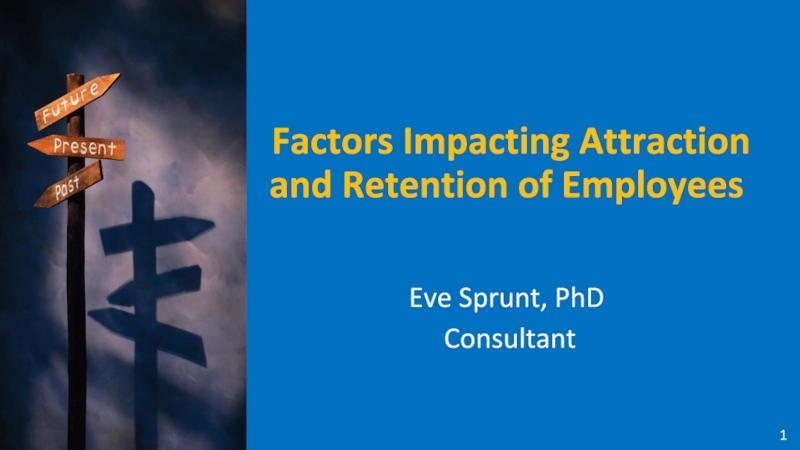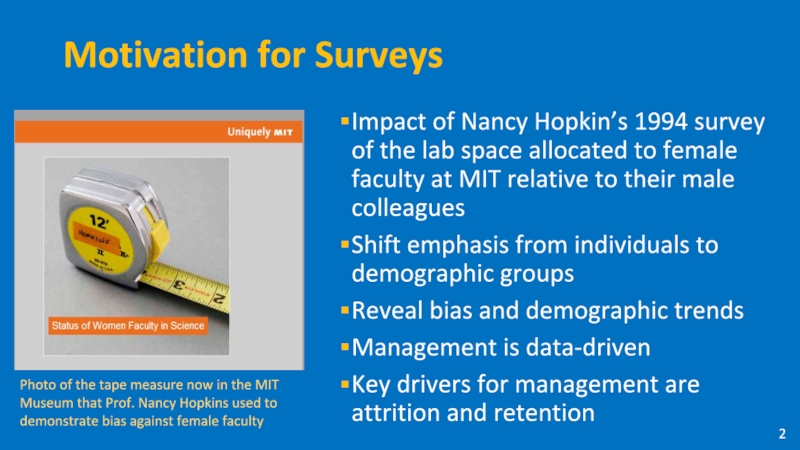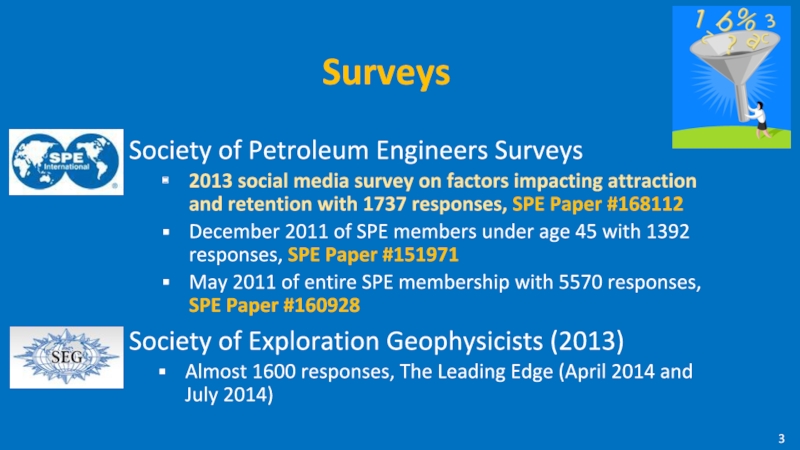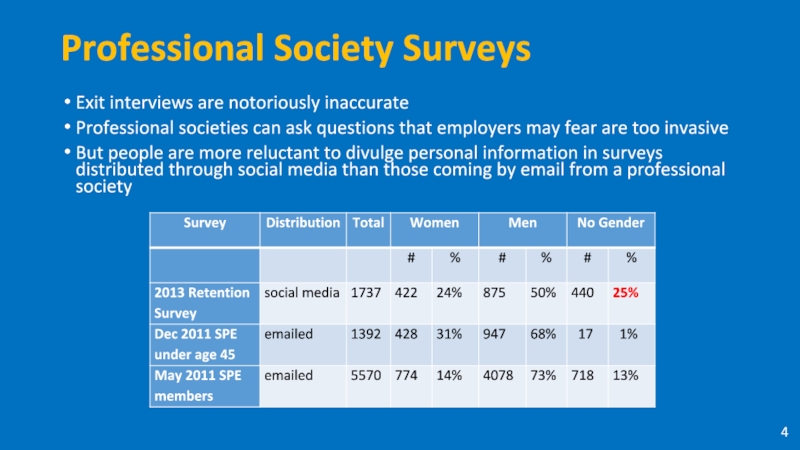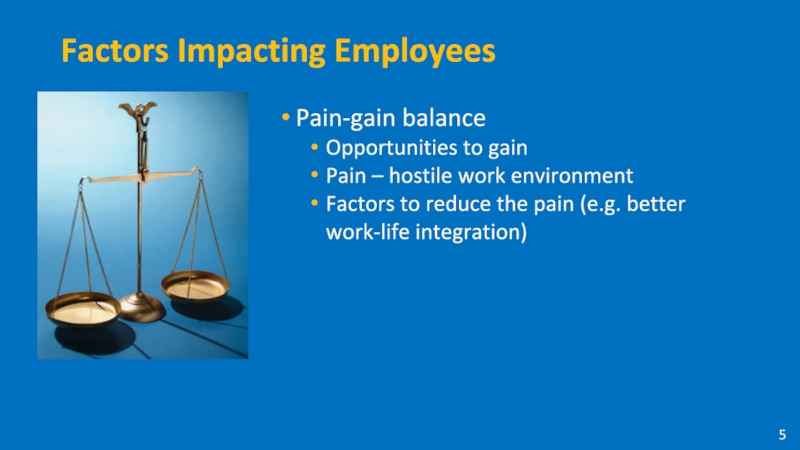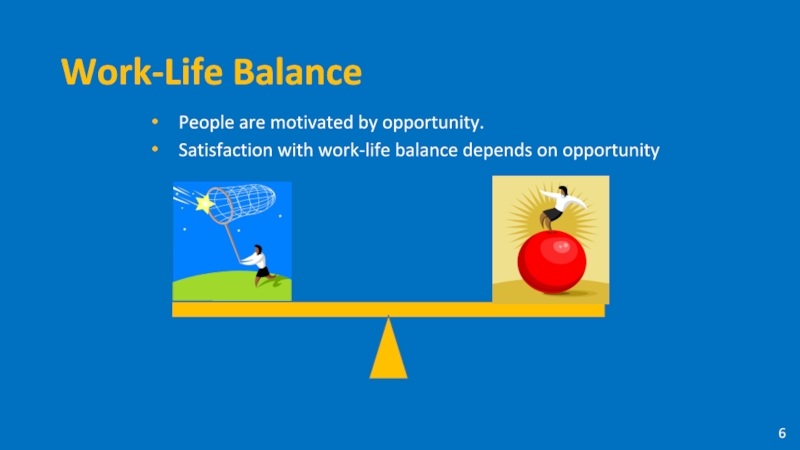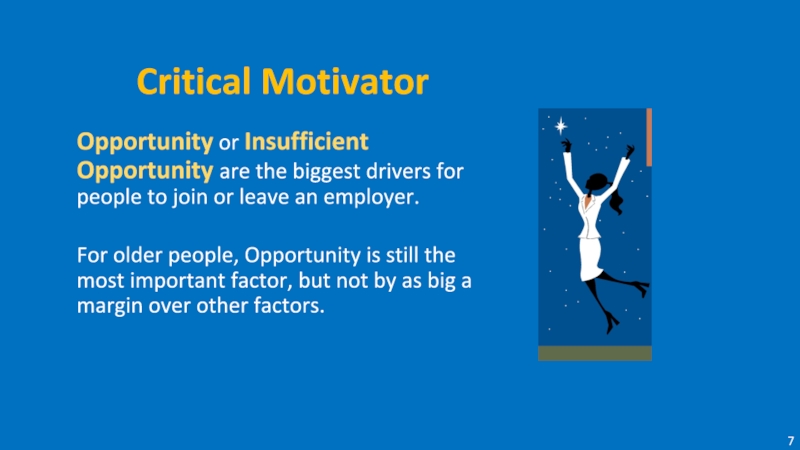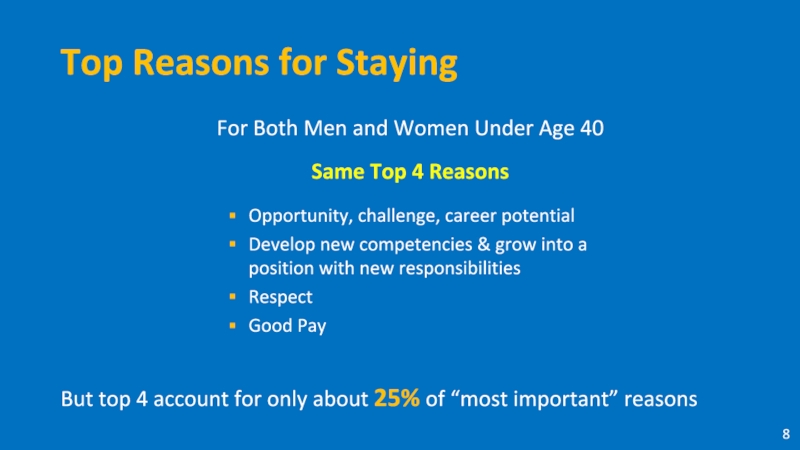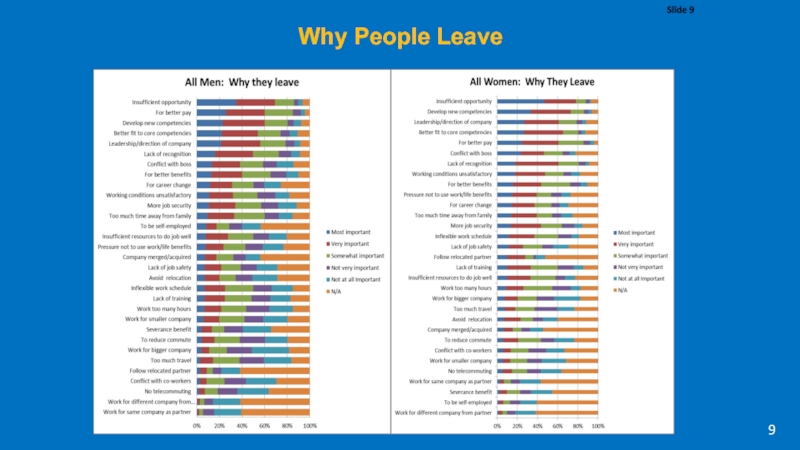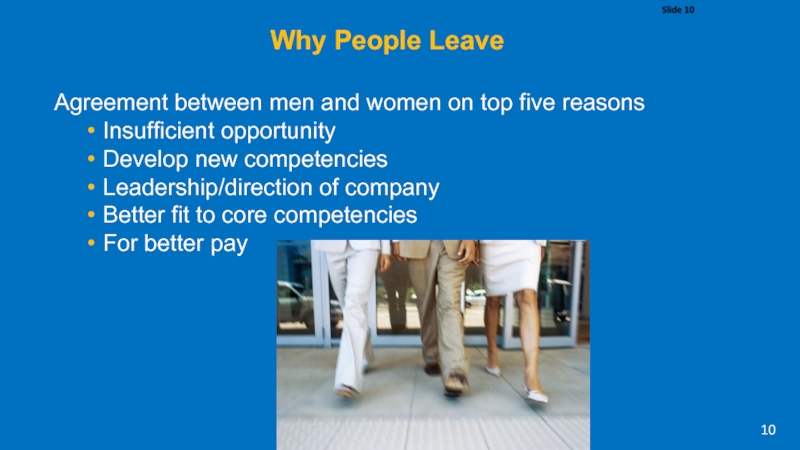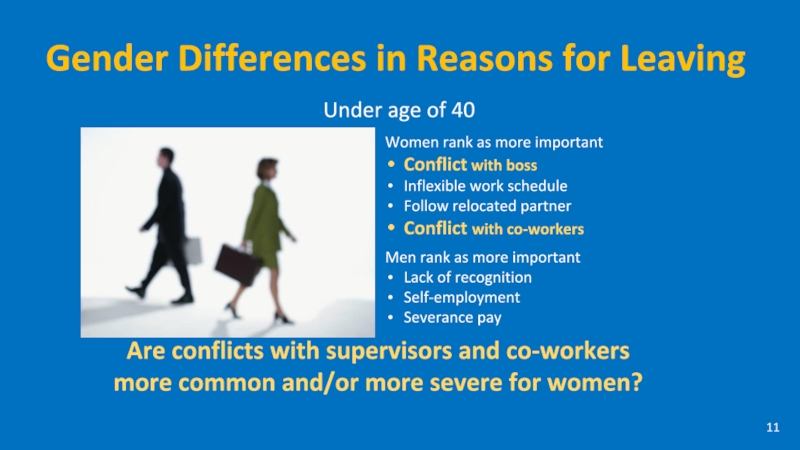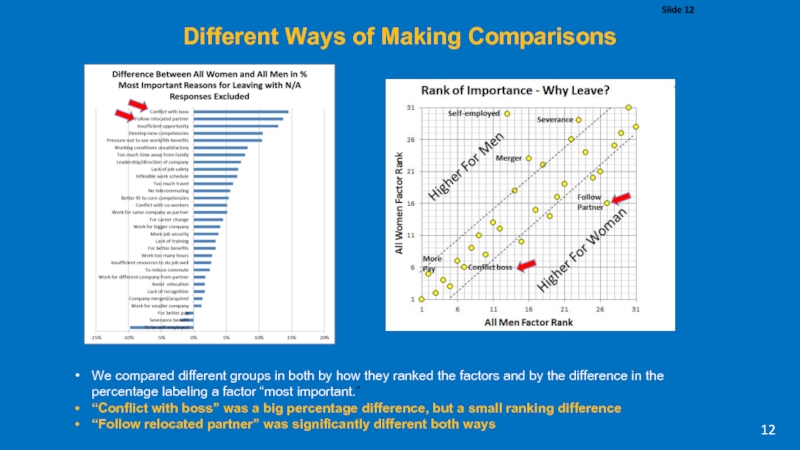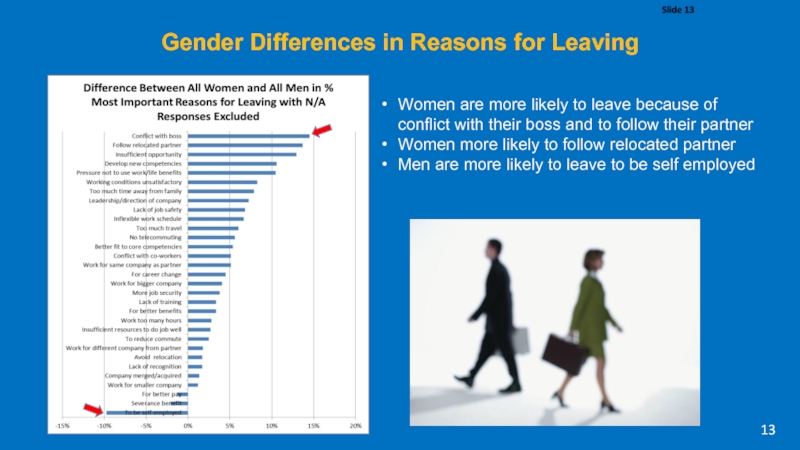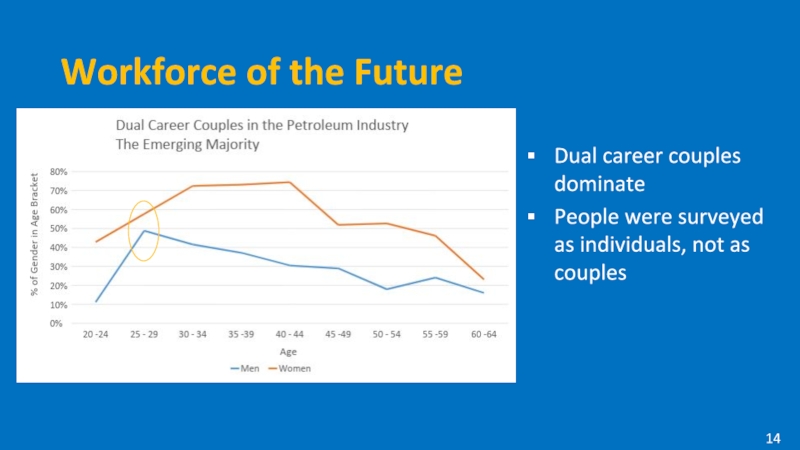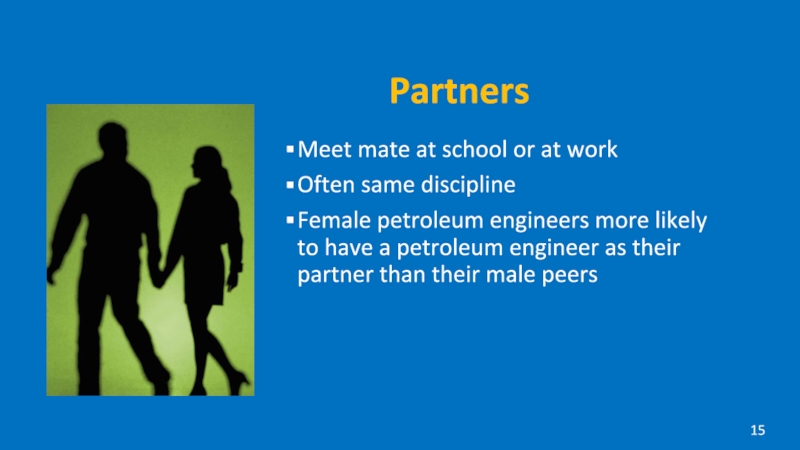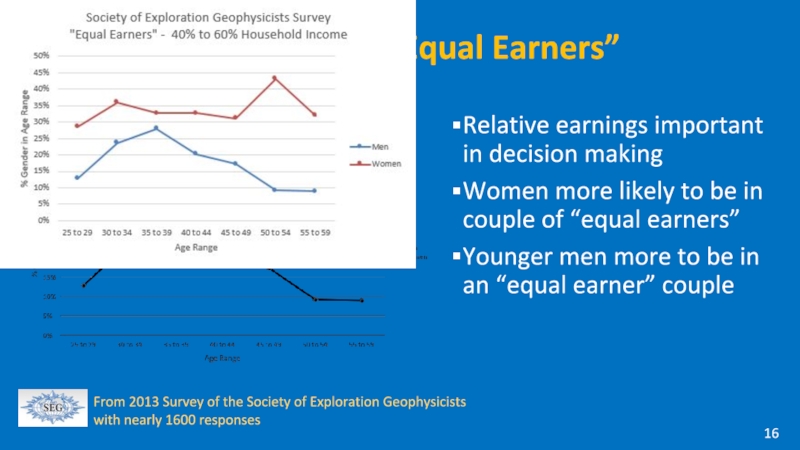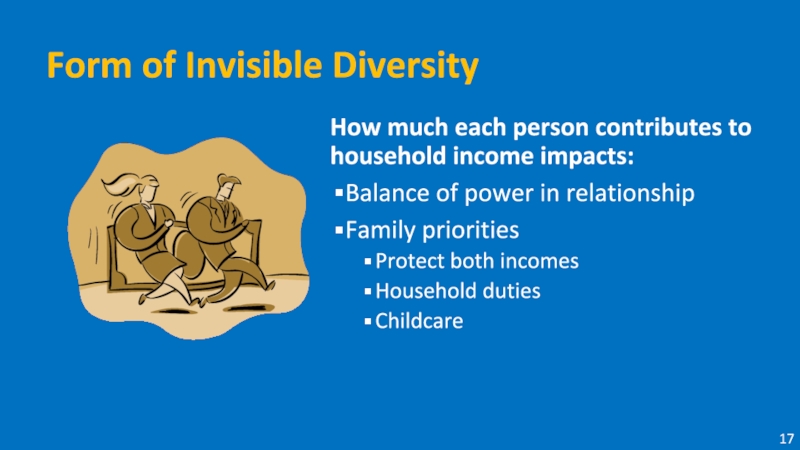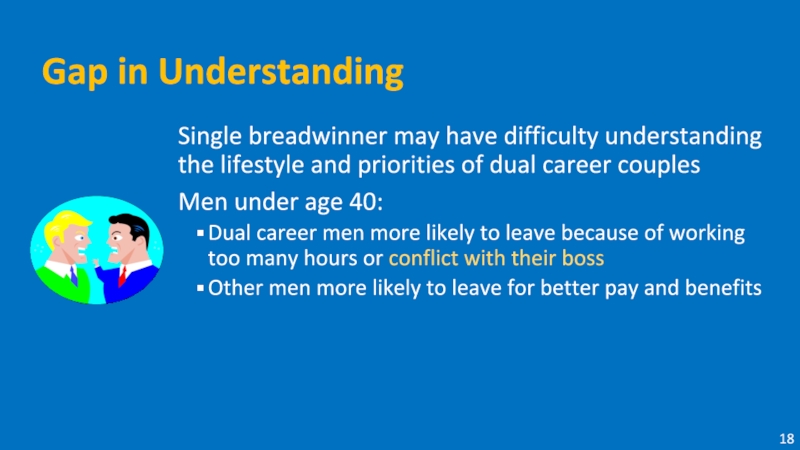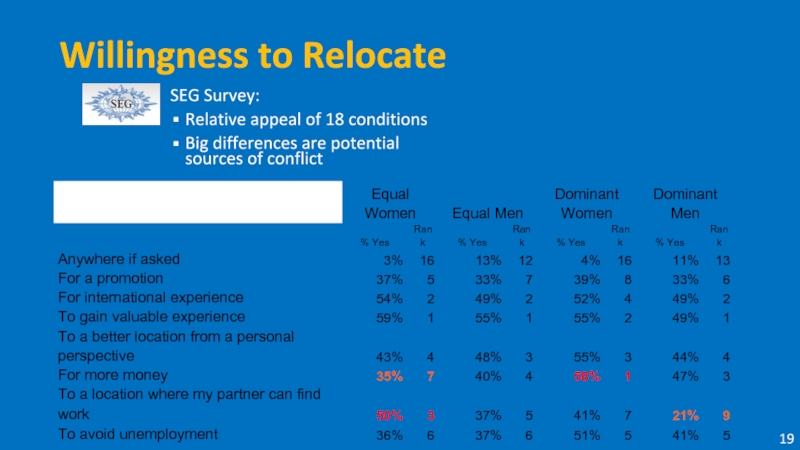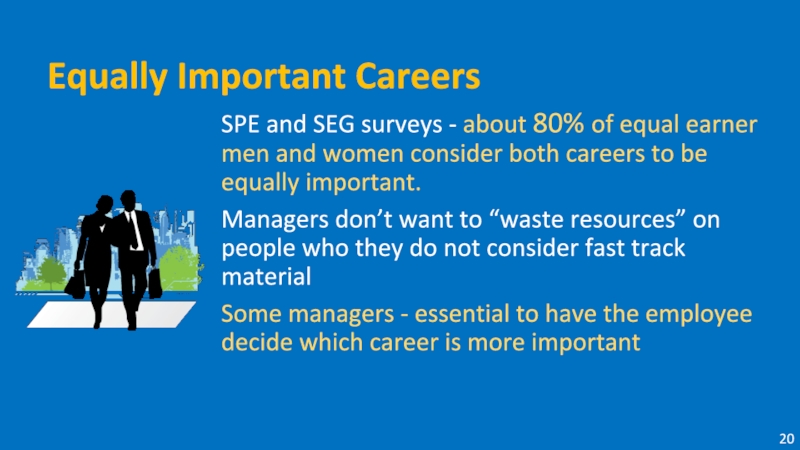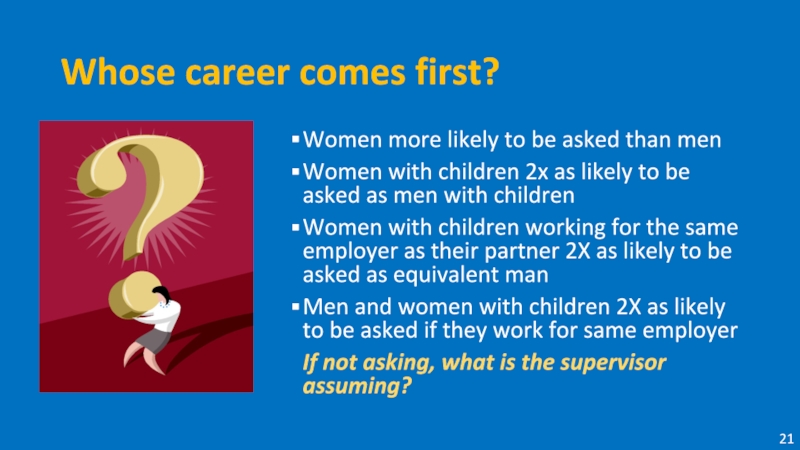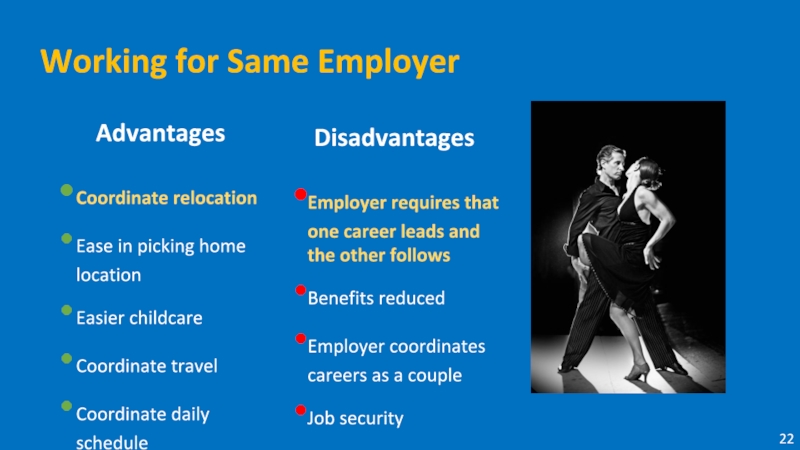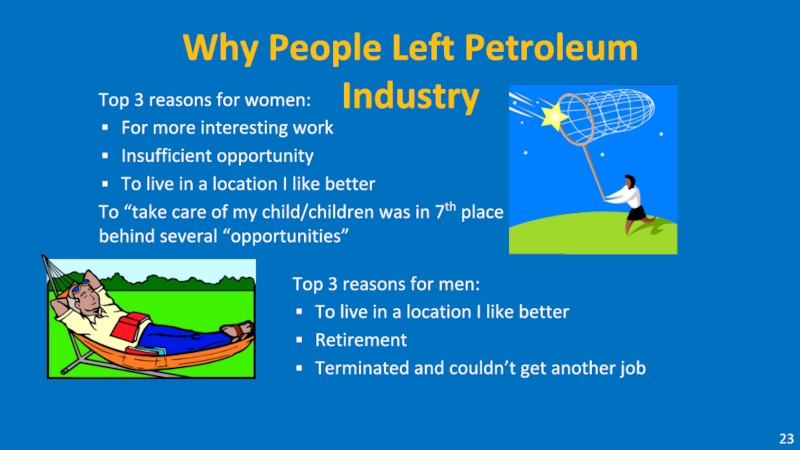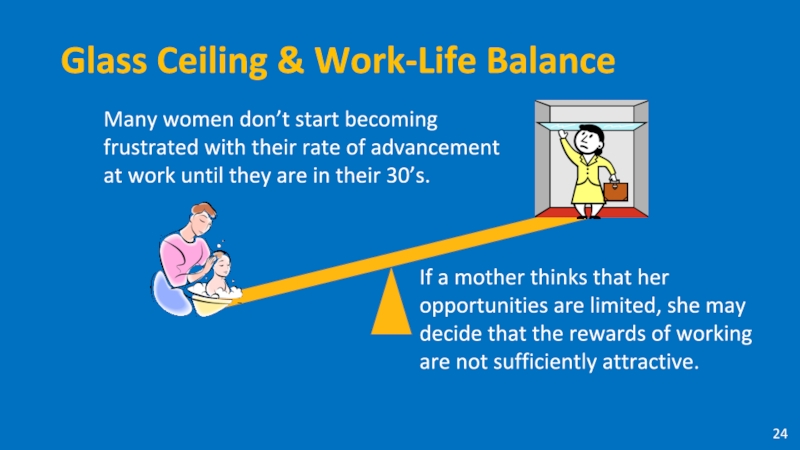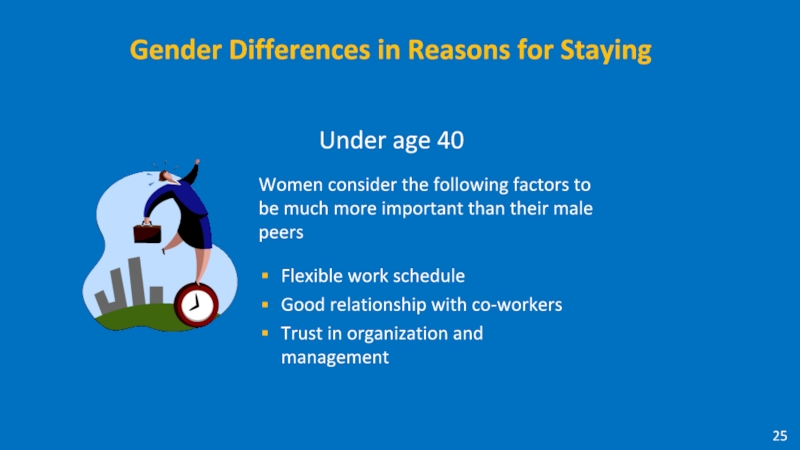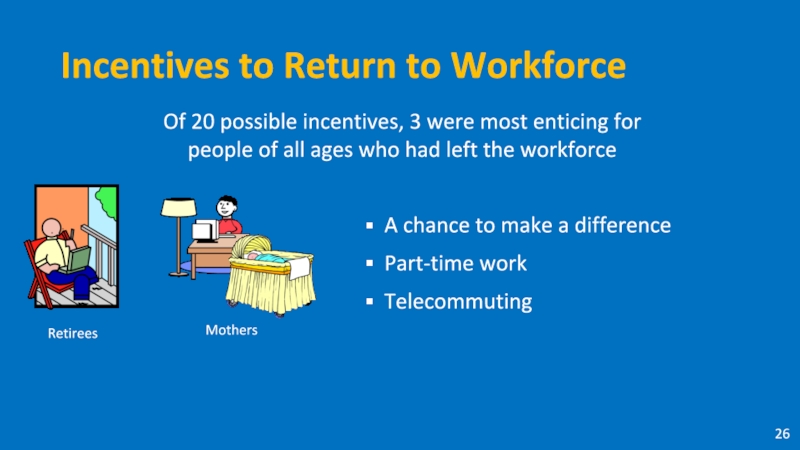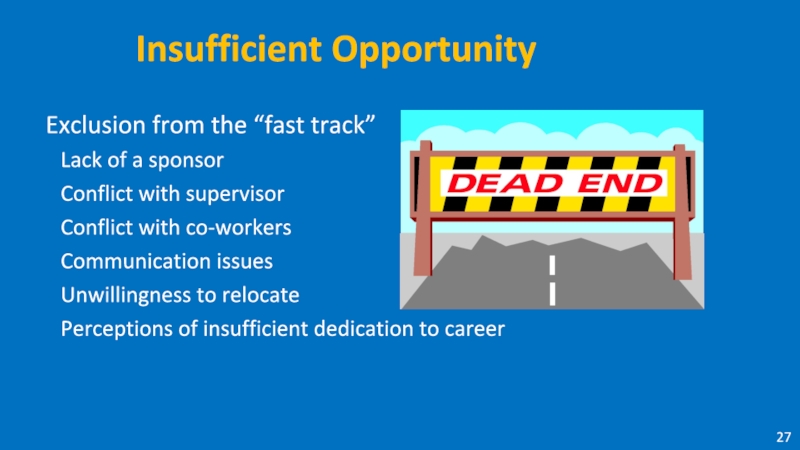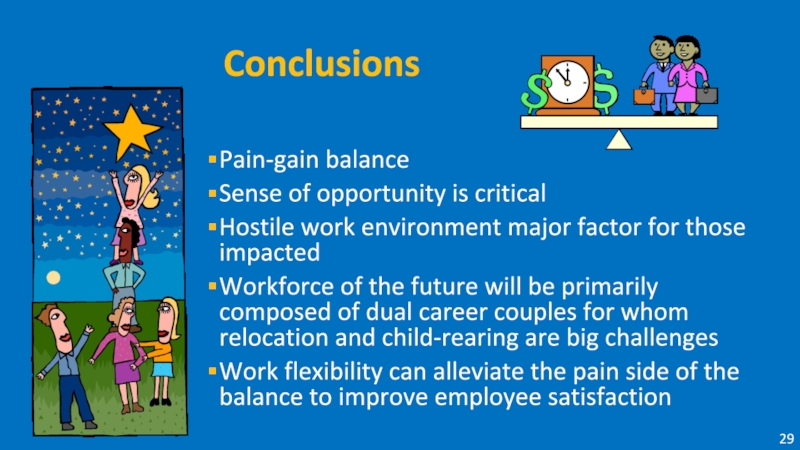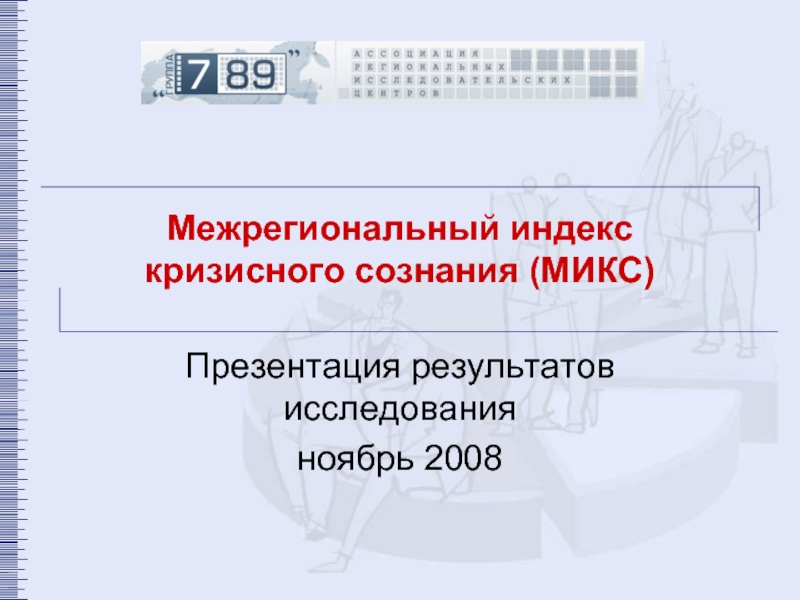- Главная
- Разное
- Дизайн
- Бизнес и предпринимательство
- Аналитика
- Образование
- Развлечения
- Красота и здоровье
- Финансы
- Государство
- Путешествия
- Спорт
- Недвижимость
- Армия
- Графика
- Культурология
- Еда и кулинария
- Лингвистика
- Английский язык
- Астрономия
- Алгебра
- Биология
- География
- Детские презентации
- Информатика
- История
- Литература
- Маркетинг
- Математика
- Медицина
- Менеджмент
- Музыка
- МХК
- Немецкий язык
- ОБЖ
- Обществознание
- Окружающий мир
- Педагогика
- Русский язык
- Технология
- Физика
- Философия
- Химия
- Шаблоны, картинки для презентаций
- Экология
- Экономика
- Юриспруденция
Factors Impacting Attraction and Retention of Employees презентация
Содержание
- 1. Factors Impacting Attraction and Retention of Employees
- 2. Motivation for Surveys Impact of Nancy Hopkin’s
- 3. Surveys Society of Petroleum Engineers Surveys 2013
- 4. Professional Society Surveys Exit interviews are notoriously
- 5. Factors Impacting Employees Pain-gain balance Opportunities to
- 6. Work-Life Balance People
- 7. Critical Motivator Opportunity or Insufficient Opportunity are
- 8. Top Reasons for Staying For Both Men
- 9. Why People Leave Slide
- 10. Why People Leave Slide Agreement
- 11. Gender Differences in Reasons for Leaving
- 12. Different Ways of Making Comparisons Slide
- 13. Gender Differences in Reasons for Leaving Slide
- 14. Workforce of the Future Dual
- 15. Partners Meet mate at school or at
- 16. Couples of “Equal Earners” Relative earnings important
- 17. Form of Invisible Diversity How much each
- 18. Gap in Understanding Single breadwinner may have
- 19. Willingness to Relocate SEG Survey:
- 20. Equally Important Careers SPE and SEG surveys
- 21. Whose career comes first? Women more likely
- 22. Working for Same Employer Advantages
- 23. Why People Left Petroleum Industry Top
- 24. Glass Ceiling & Work-Life Balance
- 25. Gender Differences in Reasons for Staying
- 26. Incentives to Return to Workforce
- 27. Insufficient Opportunity Exclusion from the “fast track”
- 28. Perception of Opportunity
- 29. Conclusions Pain-gain balance Sense of opportunity
- 30. Questions
Слайд 2Motivation for Surveys
Impact of Nancy Hopkin’s 1994 survey of the lab
Shift emphasis from individuals to demographic groups
Reveal bias and demographic trends
Management is data-driven
Key drivers for management are attrition and retention
Photo of the tape measure now in the MIT Museum that Prof. Nancy Hopkins used to demonstrate bias against female faculty
Слайд 3Surveys
Society of Petroleum Engineers Surveys
2013 social media survey on factors impacting
December 2011 of SPE members under age 45 with 1392 responses, SPE Paper #151971
May 2011 of entire SPE membership with 5570 responses, SPE Paper #160928
Society of Exploration Geophysicists (2013)
Almost 1600 responses, The Leading Edge (April 2014 and July 2014)
Слайд 4Professional Society Surveys
Exit interviews are notoriously inaccurate
Professional societies can ask questions
But people are more reluctant to divulge personal information in surveys distributed through social media than those coming by email from a professional society
Слайд 5Factors Impacting Employees
Pain-gain balance
Opportunities to gain
Pain – hostile work environment
Factors to
Слайд 6Work-Life Balance
People are motivated by opportunity.
Satisfaction with work-life balance depends
Слайд 7Critical Motivator
Opportunity or Insufficient Opportunity are the biggest drivers for people
For older people, Opportunity is still the most important factor, but not by as big a margin over other factors.
Слайд 8Top Reasons for Staying
For Both Men and Women Under Age 40
Same
Opportunity, challenge, career potential
Develop new competencies & grow into a position with new responsibilities
Respect
Good Pay
But top 4 account for only about 25% of “most important” reasons
Слайд 10Why People Leave
Slide
Agreement between men and women on top five
Insufficient opportunity
Develop new competencies
Leadership/direction of company
Better fit to core competencies
For better pay
Слайд 11Gender Differences in Reasons for Leaving
Under age of 40
Men
Lack of recognition
Self-employment
Severance pay
Women rank as more important
Conflict with boss
Inflexible work schedule
Follow relocated partner
Conflict with co-workers
Are conflicts with supervisors and co-workers more common and/or more severe for women?
Слайд 12Different Ways of Making Comparisons
Slide
We compared different groups in both
“Conflict with boss” was a big percentage difference, but a small ranking difference
“Follow relocated partner” was significantly different both ways
Слайд 13Gender Differences in Reasons for Leaving
Slide
Women are more likely to
Women more likely to follow relocated partner
Men are more likely to leave to be self employed
Слайд 14Workforce of the Future
Dual career couples dominate
People were surveyed as individuals,
Слайд 15Partners
Meet mate at school or at work
Often same discipline
Female petroleum engineers
Слайд 16Couples of “Equal Earners”
Relative earnings important in decision making
Women more likely
Younger men more to be in an “equal earner” couple
From 2013 Survey of the Society of Exploration Geophysicists with nearly 1600 responses
Слайд 17Form of Invisible Diversity
How much each person contributes to household income
Balance of power in relationship
Family priorities
Protect both incomes
Household duties
Childcare
Слайд 18Gap in Understanding
Single breadwinner may have difficulty understanding the lifestyle and
Men under age 40:
Dual career men more likely to leave because of working too many hours or conflict with their boss
Other men more likely to leave for better pay and benefits
Слайд 19Willingness to Relocate
SEG Survey:
Relative appeal of 18 conditions
Big differences are
Слайд 20Equally Important Careers
SPE and SEG surveys - about 80% of equal
Managers don’t want to “waste resources” on people who they do not consider fast track material
Some managers - essential to have the employee decide which career is more important
Слайд 21Whose career comes first?
Women more likely to be asked than men
Women
Women with children working for the same employer as their partner 2X as likely to be asked as equivalent man
Men and women with children 2X as likely to be asked if they work for same employer
If not asking, what is the supervisor assuming?
Слайд 22Working for Same Employer
Advantages
Coordinate relocation
Ease in picking home location
Easier childcare
Coordinate travel
Coordinate
Disadvantages
Employer requires that one career leads and the other follows
Benefits reduced
Employer coordinates careers as a couple
Job security
Слайд 23Why People Left Petroleum Industry
Top 3 reasons for women:
For more interesting
Insufficient opportunity
To live in a location I like better
To “take care of my child/children was in 7th place behind several “opportunities”
Top 3 reasons for men:
To live in a location I like better
Retirement
Terminated and couldn’t get another job
Слайд 24Glass Ceiling & Work-Life Balance
Many women don’t start becoming frustrated
If a mother thinks that her opportunities are limited, she may decide that the rewards of working are not sufficiently attractive.
Слайд 25Gender Differences in Reasons for Staying
Under age 40
Women consider
Flexible work schedule
Good relationship with co-workers
Trust in organization and management
Слайд 26Incentives to Return to Workforce
A chance to make a difference
Part-time
Telecommuting
Of 20 possible incentives, 3 were most enticing for people of all ages who had left the workforce
Retirees
Mothers
Слайд 27Insufficient Opportunity
Exclusion from the “fast track”
Lack of a sponsor
Conflict with supervisor
Conflict
Communication issues
Unwillingness to relocate
Perceptions of insufficient dedication to career
Слайд 29Conclusions
Pain-gain balance
Sense of opportunity is critical
Hostile work environment major factor
Workforce of the future will be primarily composed of dual career couples for whom relocation and child-rearing are big challenges
Work flexibility can alleviate the pain side of the balance to improve employee satisfaction
